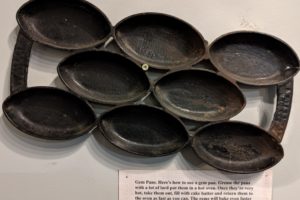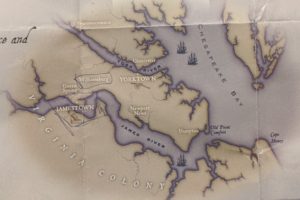When we were walking around the inside of Fort Morgan, we spent time at the concrete gun emplacement across from the fort’s entrance known as Battery Duportail that faced toward the Gulf Coast. About the same time, Battery Bowyer, Battery Thomas, Battery Schenck, and then Battery Dearborn were built outside of the fort walls to protect the coastline along the Gulf Coast and Mobile Bay. We’ll cover the first 3 batteries in this post and the 4th battery in the next post. Come take a a walk with us outside of the fort.

As we talked about in part 17, after the Civil War as the European naval powers grew and our own coastal defenses were deteriorating, the U.S. military and Congress got to work to keep the homeland safe. In 1885 President Cleveland ordered the creation of a fortification board directed by the Secretary of War Endicott to review our status and recommend changes for a modern coast defense program. The plan that came out of this review became the basis for our coast defense policy well into the 1900s.
As warships got bigger, faster, and had to navigate further out in the waterways, gun batteries on land had to improve to defend against these warships that could pound defenders. Battery Bowyer was the 1st concrete gun battery built here at Fort Morgan in 1895. It mounted four 8-inch breech-loading rifled guns on “disappearing” carriages. Unlike the other batteries in this post that face Mobile Bay, Battery Bowyer was built to protect the Gulf Coast area.


This 1st attempt at using the BIG guns had problems with its design. The 8-inch guns were too light to engage well-armed and armored warships, they lacked a modern fire control system to coordinate the Battery’s fire, and the structure leaked badly when it rained. An 1899 inspection found, “Two of the emplacements in this battery are nearly useless, owing to the seepage of water through ceilings, walls and floors.”
Correcting the problems only brought about minimal improvement, so the guns were removed during WWI and the battery officially deactivated.

Battery Thomas

The first of 2 rapid-fire gun batteries, Battery Thomas facing Mobile Bay incorporated changes that Battery Bowyer had faced just a few years previous. The guns at Battery Bowyer hadn’t been rapid fire.


This view of the Bay looks over the naval minefield where the Confederates placed Fretwell-Singer torpedoes to protect the main shipping channel during the Civil War. During the Endicott era after the Civil War, men placed electronic mines that could be detonated from Battery Thomas.
In March 1898, as the nation moved toward war with Spain, the Army rushed this battery into service. The concrete platforms were finished on April 16, and two 4.7-inch rapid-fire guns were installed on May 9. This artillery piece, typically a gun or howitzer, has several characteristics that when combined could mean the weapon could fire at a fast rate. Quick-firing had been introduced worldwide in the 1880s and 1890s and had a marked impact on war both on land and at sea.


A 1915 study warned the Army that the battery, located on its high mound, was extremely vulnerable to enemy fire.

The Army deactivated the battery in October 1917 and removed the guns. Two years later, one of the gun emplacements became a Range Finding Station for the next battery we’ll be looking at.
You can also see the fort’s bastions, or bulwarks (a structure projecting outward from the curtain wall of a fortification, most commonly angular in shape) at the corners of the fort. A fully developed bastion consists of 2 faces and 2 flanks, with fire from the flanks being able to protect the curtain wall and the adjacent bastions. A good design for a land war but not a naval one.

Battery Schenck
Completed in 1900 with two 3-inch rapid-fire guns, this battery also protected the mine field in front of the battery.


When it did receive its guns, the battery got 2 Model 1898, 15-pounder rapid-fire guns. A 3rd position was added in 1904 and a 4th in December 1906.

In the following picture, one of Battery Schenck’s 15-pounder rapid-fire guns stands ready for action in 1918.

Gun crews were members of the 170th Coast Artillery Company and most came to Fort Morgan once the mines were put in place. After WWI, the U.S. Army declared in 1920 that all Model 1898 15-pounder rapid-fire guns to be obsolete. During the summer, the Army removed both of these model guns and scrapped them. The battery’s Model 1902 was removed and transferred to Fort Pickens in Florida.
views of Fort Morgan




back side of the fort




The final post of our time at Fort Morgan will show us what the grounds looked like at the end of the 1800s and the early 1900s before the fort grounds were given to the state of Alabama as an historical site.






